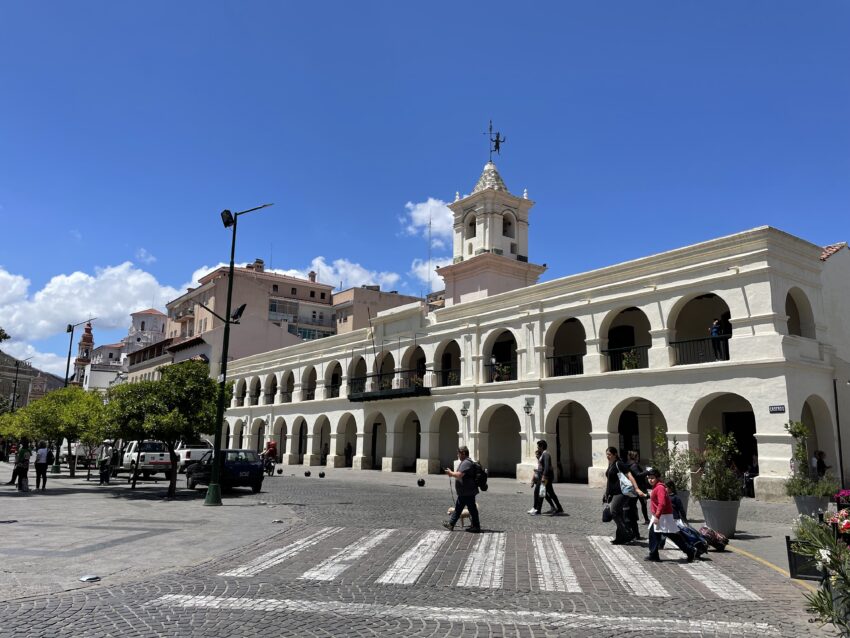Salta in the north west of Argentina is a jumping off point for adventures in the Andes, but there’s more to the city than tour operators competing for tourist pesos and coaches heading west. True, we used it as a base for a trip to the Salinas Grandes salt flats but we also found interesting attractions and cool nightlife.
Did we make the right decision on choosing it over, say, Mendoza or Cordoba when drawing up our itinerary? I think so…
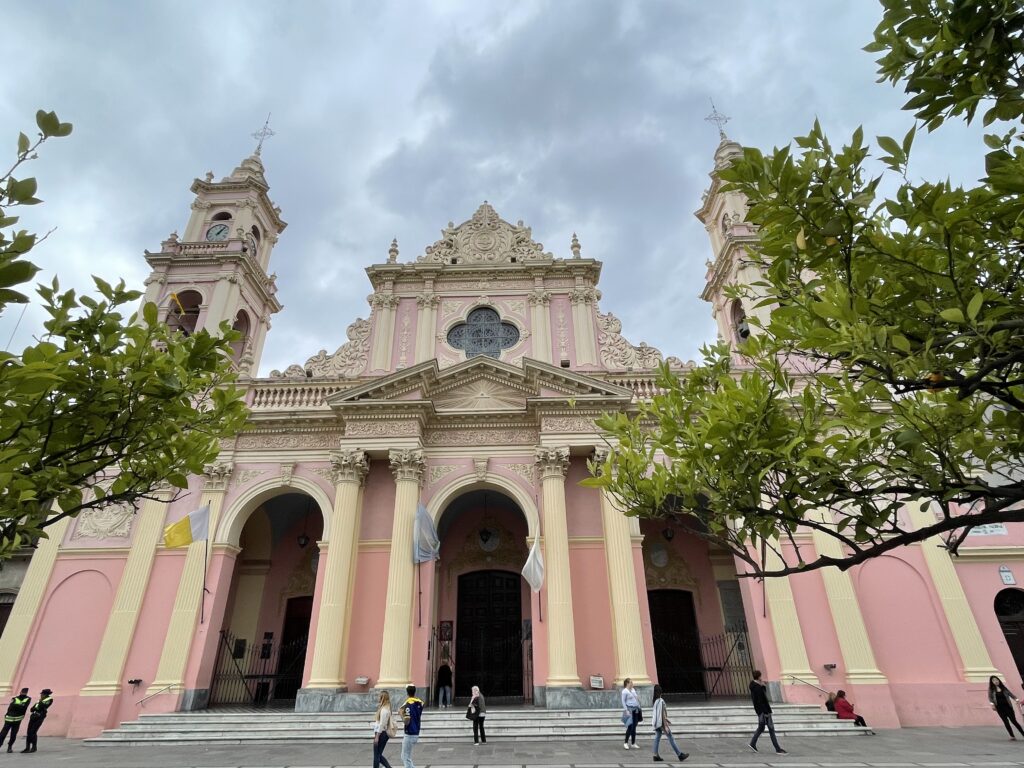
Founded in the 16th century by the conquistadores (who also took great pleasure in killing the native peoples), it’s a friendly city of more than half a milliion souls that’s laid out in a grid pattern and which sprawls across the valley floor between modest hills and more significant mountains. It’s a typical mix of fine historic buildings, dodgy uncontrolled modern development, tree-lined side streets and traffic jams, but with a strong Spanish feel.
We opted to say at the Legado Mitico Boutique hotel, a beautiful restored town house with cavernous rooms and a charming courtyard. Just a few minutes from the city centre, it lies on a main road but it felt a world away from the Argentine Automobile Club service station opposite and was a real treat to go back to after a busy day in the noisy streets. Just down the road lay the snappily named Plaza General Don Martin Miguel de Guemes, named after a 19th century military leader, and one of several similar squares in the city with giant palms, pelargoniums, dusty patches of lawn and pompous statues. It’s overlooked by the Palacio Legislativo.
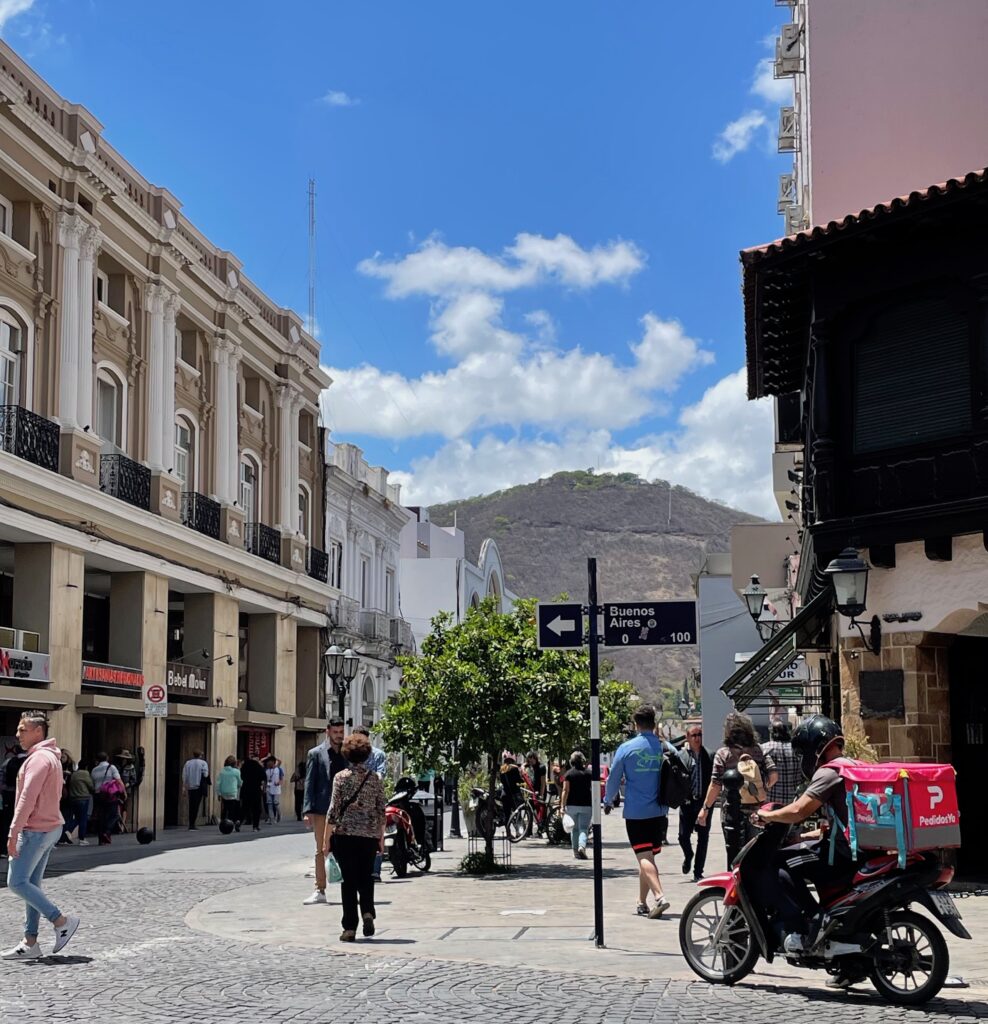
The centre is reasonably easy to walk around, if you ignore the uneven pavements, questionable driving and dog shit. Some streets appear to be thriving with fashion boutiques, delis and glam homewares stores, but others look a bit more run down. Perhaps Covid and Argentina’s various economic travails have taken their toll because it wasn’t difficult to spot empty shop fronts, crumbling 19th century facades and derelict buildings.

A good way to take in Salta’s size is to head to the Parque San Martin south east of the centre and ride the gondola lift to the top of the San Bernardo hill, at about 300m or so. There’s a cascade of concrete waterfalls at the top along with an attractive if modest park, with healthy and colourful planting. We stopped at the peak’s wine bar for a spot of lunch, taking in the views of the city and the broad Lerma Valley. The city’s grid structure and countless terracotta rooftops are easy to see up high. The hills around and beyond looked a bit drab so early in spring, the trees and shrubs yet to come into colour, while clouds hid the tops of the Andes far out to the west.
Returning by gondola to the park, we walked back to the city centre taking in the street art and attractive Spanish-style architecture. Just as in Buenos Aires, doors and windows are often works of art in themselves and worth a coffee table book of photography. Many streets are tree-lined, and locals have planted up even the most modest of courtyards with pots and plants. Jasmine and bougainvillea are popular choices and salvias, perhaps my favourite genus, fill containers.
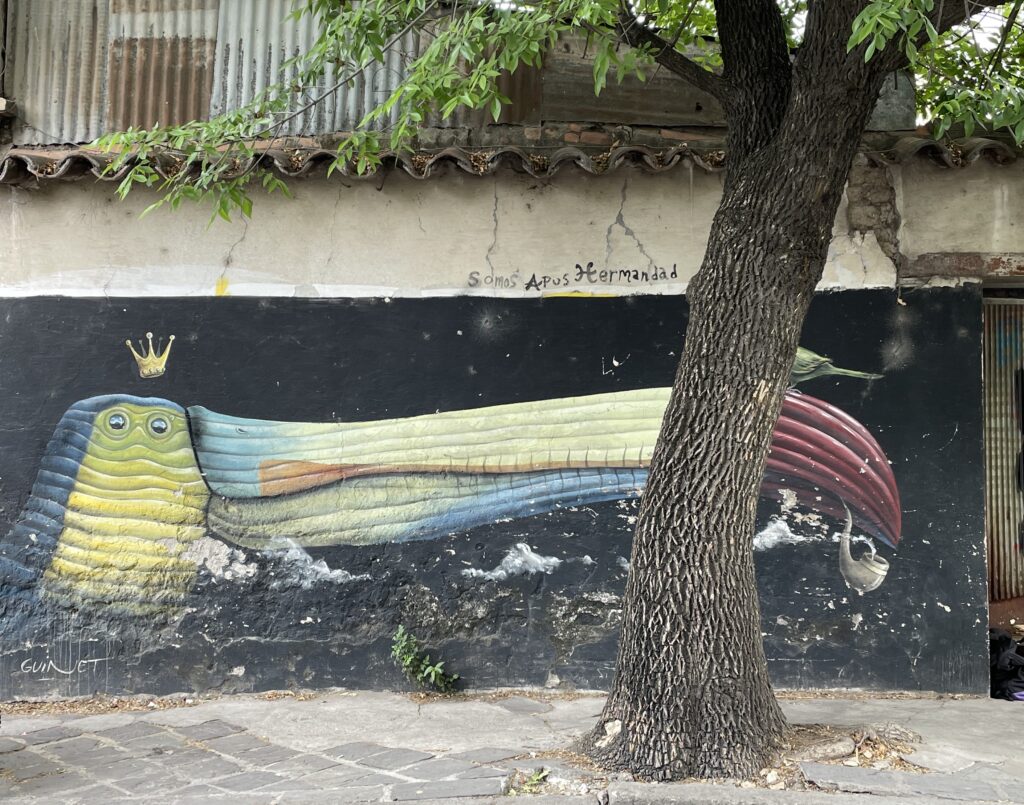
The walk took us past the colourful Basílica de San Francisco, with its later and imposing 19th century tower. Inside is typically grand and it has an epic dome, but it’s morbid in the catholic style. The exterior of an adjoining museum is much more attractive, featuring a fabulous 1970s ceramic tile mural by Elsa Salfity in honour of 19th century Argentine cleric Fray Mamerto Esquiú.
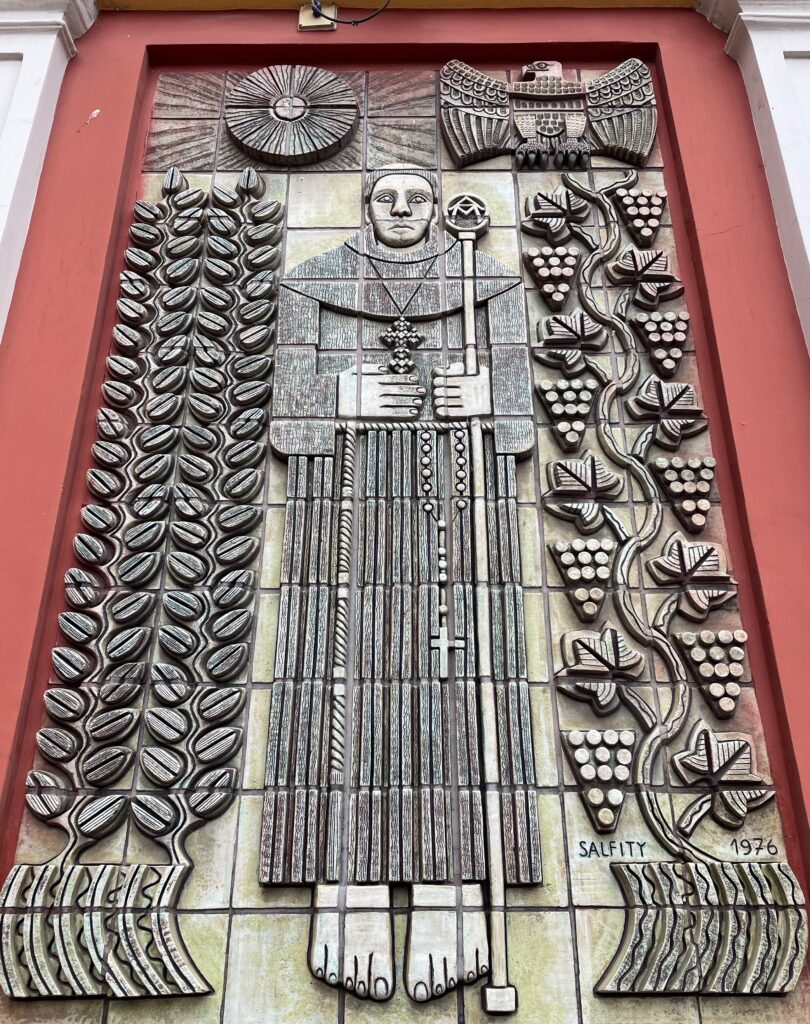
The beating heart of Salta is Plaza 9 de Julio, where white roses and swaying palms compete with yet more statues of old men for attention. The square is a mix of elegant architecure, the city cathedral, modern eyesores, cheapo cafes aimed squarely at tourists and various historic buldings. The charming, galleried Cabildo dates from the 18th-century and once served as the town hall; it’s now the Museo Histórico del Norte with a real mix of exhibits that tell the story of northern Argentina from pre-colonial times, some with English translation. There are several cobbled courtyards where historic carriages and coaches have been parked. It’s a bit of a mish-mash but interesting nevertheless and the building itself is a gem.
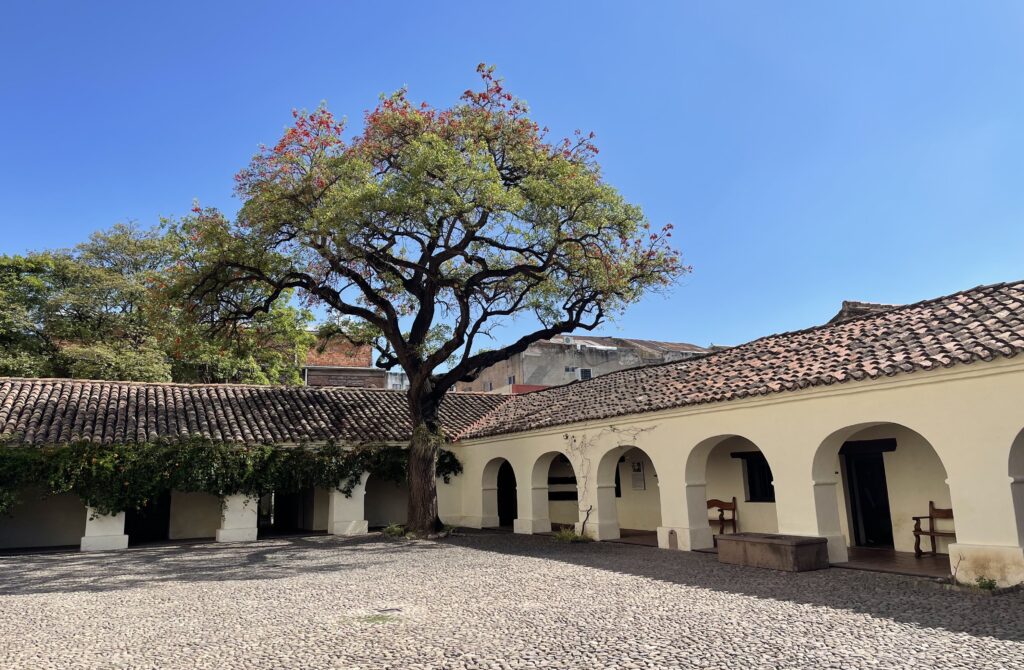
Elsewhere on the square, at the snappily named Museum of High Altitude Archaeology, is something altogether more macabre – the mummified remains of three 500-year-old Inca children. The museum is devoted to the discovery of the bodies at the peak of the Llullaillaco volcano on the border of Argentina and Chile as well as the grim story behind their deaths, and it’s thoroughly engrossing.
The three children (only one is displayed at a time) were all sacrificed to the Inca gods for a variety of reasons that the elders thought would benefit the community. And it’s fair to say that they were convinced the children were going to a better place. But to see the mummified remains, so perfectly preserved because of the environment where they died, is a pretty disturbing experience and I’m not sure whether they should even be there. Certainly the Inca descendants of today are thoroughly opposed to the children not being allowed to rest at the top of their mountain and it did feel voyeuristic crowding around the glass box that now contains their remains.
We were shown the six-year-old so-called Lightning Girl, so named because of the damage she sustained during a storm. It was even more traumatic to learn that the five-year-old boy who was sacrificed alongside her was clearly not unconscious when he died, as the elders would’ve intended after plying them with alcohol and coca. He’d clearly fought against being buried alive… However, if nothing else, the exhibition opens up a specific element of Inca life in an impressive way. I just wish it could take a more rounded view of Inca life rather than just focusing on one element of it, perhaps then the display of the children wouldn’t be quite so controversial.
Away from the daytime attractions, Salta’s nightlife is a real mixed bag. Much is made of the various bars and restaurants and pena places gathered in quantity at the northern end of Balcarce but this is industrial strength stuff, one of those roads you can’t walk up without being pestered by one tout after another trying to drag you into their establishment. Music rings out from many of them, including the folkish peña bars, resulting in a hellish sods’ opera that’s painful to listen to when sitting outside with a beer. Still we had a few drinks and did eat reasonably well at the Umai sushi restaurant and the atmospheric Café del Tiempo.
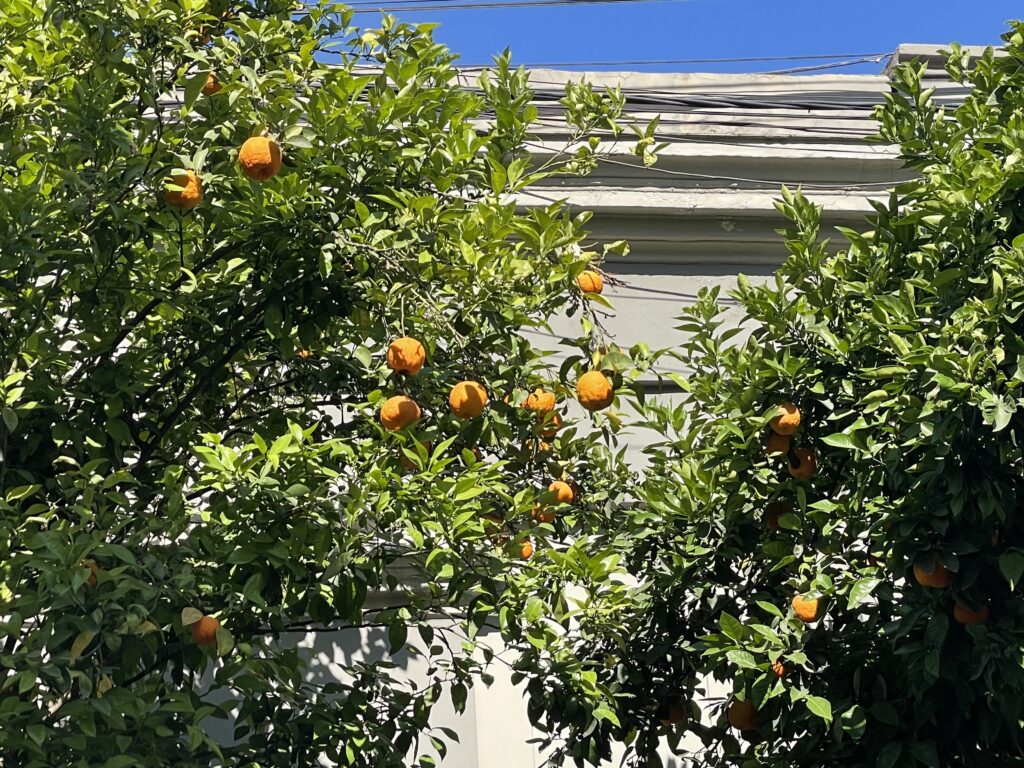
We found better, friendly places to hang out to the east of the city centre on Caseros. There, at El Charrúa Restaurante y Parrillada, locals and visitors consumed steaks the size of the average family car. On Vicente Lopes we ate really well at Viracocha and drank at the appropriately named Be Happy – Bar de Amigos nearby, where locals were engrossed in the local version of the pub quiz.
The following morning we had to pack our bags and return to Buenos Aires, the start of our long journey home.

